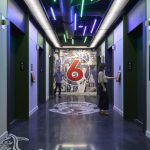Salesforce Tower Chicago: Execution Against All Odds

CHICAGO, IL — Sixty stories above the convergence of the Chicago River stands Salesforce Tower Chicago. At 835 feet in height, the newest addition to the Downtown Chicago skyline brings 1.2 million square feet of Class A office space to the River North district. The latest addition to Alvine Engineering’s impressive downtown Chicago portfolio comes off the heels of building systems design work at River Point Tower, Wolf Point West Tower, and the Wolf Point North parking garage. Salesforce Tower Chicago is the finishing touch to the Wolf Point mixed-use development. The project is a venture envisioned by real estate developer Hines in partnership with the Joseph P. Kennedy family and Pelli Clark & Partners, who led the design efforts for the entire Wolf Point site. A precise design drives the cutting-edge allure of the office space. The building features column-free corners, floor-to-ceiling windows, active outdoor spaces, and robust mechanical and electrical components that support the project’s ambitious environmental objectives.
Amidst the rousing success of the tower’s construction were a myriad of obstacles. Originally envisioned and proposed in 2012 with the Wolf Point Master Plan, the construction of Salesforce Tower Chicago was impacted by the COVID-19 pandemic. Along with an unprecedented supply chain slowdown, overall economic confusion, and a radical restructuring of collaboration strategy, Alvine Engineering and its partners were forced to quickly adapt to the uncharted terrain of construction amidst a full-scale pandemic. In-person meetings with suppliers and collaborators turned virtual. Interior layouts, construction coordination, and other future considerations now had to accommodate a post-COVID world of social distancing and hybrid work compliance.
As one of the few projects continuing construction throughout the pandemic, Salesforce Tower Chicago would become an example of post-COVID office space. Additionally, the project would become a model for office-tenant talent attraction in light of the nationwide surge in remote work accommodations.
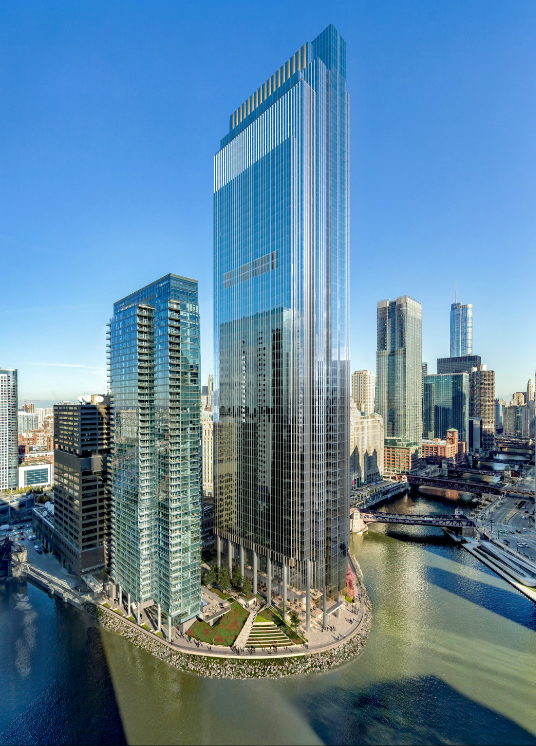
Unique Building…Unique Solutions
The Newcomer
HKS Architects’ Chicago office (HKS) was newer to Hines’ projects and adapted quickly to working with partners they had never worked with before. HKS served as the project’s architect-of-record. Sean May, a Senior Project Architect at HKS, spoke on how their architectural team utilized their firm’s national experience and the design team’s experience and longstanding relationship with Hines in order to collaborate effectively with the industry-leading developer and other project partners.
“There were a lot of challenges trying to build a skyscraper during the pandemic,” Sean explained, “There have been questions about the feasibility of skyscrapers in today’s day and age. So, on top of adding more incentivized values for tenants to transition back to the office from remote work, the design team had to stay on top of deadlines and tasks despite product shortages and limitations on component testing.”
Sean noted the added challenge of collaboration with project leaders being scattered across the country during a time when COVID-19 severely limited travel. Shifting the collaboration strategy to a virtual arena and adding more meetings where the design team constantly refined and reiterated the developer’s vision was a critical factor in the project’s success.
“Chicago has a rich history of building tall buildings that make a lasting architectural impact,” Sean concluded, “There’s world-class design across the skyline, and now HKS Architects is a part of that. I’m very humbled and proud that I could contribute to the project.”

Opportunities of Scale
The mechanical system is comprised of a chiller plant on the bottom floor, which pushes cold water to ‘nests of infrastructure’ on different levels of the building. A space of this size and scale required more infrastructure than would fit in a standard mechanical room. “Outrigger floors” that were designed by the structural engineer to hold cross-bracing and beams were not ideal for tenant use. As a result, large air handling units and other vital infrastructure components were custom-fit around the structural components.
“There are some air handling units that are the same size as a small house,” Dan Karnes stated. “They were as tall as we could ship into the city and set to a size that ensured they could fit underneath the bridges of Chicago as they were transported to the construction site.”
Dan Karnes is an Alvine Engineering mechanical engineer who led the mechanical design team, with oversight from Principle-in-Charge Steph Guy, on the Salesforce Tower Chicago project. He continued to state that some of the mechanical components and ducting were so large it had to incorporate portions of the structural beams inside of the ductwork as a solution for space constraints.
A vital piece necessary for meeting energy code requirements was thanks, in large part, to the centralized mechanical infrastructure, which allowed for exhaust heat recovery from the restrooms on every level to be concentrated back to the centralized mechanical rooms. According to Dan, this strategy was advantageous in earning seven LEED energy credits with the intent to earn LEED Silver certification.
Another project investment, prompted by the sheer scale of the plumbing system, was a reclaimed condensate mechanism to provide the building with additional water-saving capabilities. The design collects condensation, normally wasted, from the building’s hydronic system and redistributes the water to a tank that cleans and feeds the plaza irrigation systems. It is projected that the system will reclaim tens of millions of gallons of water throughout the building’s lifetime.
Utility Stacking
In addition to changes and other shifts in design being coordinated in light of COVID-19, some of the most stringent design parameters in the country were implemented within the Salesforce Tower Chicago project. Hines’ energy and carbon emission goals went well above and beyond the Chicago municipal base requirements for efficiency and power consumption. Salesforce, the San Francisco-based anchor tenant for the project, brought ambitious energy goals inspired by their history with California’s innovative approach to energy conservation. Thanks to Alvine Engineering’s extensive relationship with Hines and a well-experienced portfolio in energy-efficient construction, including California-based projects, the electrical design met the demanding energy requirements of both entities with relative ease.
“We have a team that’s very comfortable pursuing those goals,” Kyle Weber, P.E., stated concerning the project’s energy code requirements. “We’re so entrenched in meeting those energy objectives that we were able to work through all of the obstacles to provide a highly efficient design that met those standards.”
Kyle Weber is an Alvine Engineering project manager who was a lead electrical engineer on Salesforce Tower Chicago. The tower is the 17th tallest building in Chicago and cracks the list of the top 100 tallest buildings in the United States by a wide margin (71st). A building of this stature can offer unique design challenges for electrical engineers as pathways and services become more convoluted to coordinate in correlation to the height of the building. Under the guidance and expertise of Brandon Rich, P.E., LEED AP BD+C, WELL AP, the design team devised a solution that involved dedicating space for a utility provider in a stacked room rather than having the utility live in a central point.
“We dedicated a portion of each level as space for the electrical utility company, and that stacks throughout the building,” Kyle explained. “This design allows for more efficient electrical distribution to tenants on a floor-by-floor basis.”
The project is also pursuing WELL accreditation and set to achieve Hines’ market-leading quality standards with an extensive package of features: UV lights in air handling units that mitigate microbial growth, dual-level air filtration with perimeter foam gaskets to prevent filter bypass, MERV 16 air filters which effectively capture COVID-19 particles, and CO2 monitoring that adjusts outside air quantity based on occupancy.

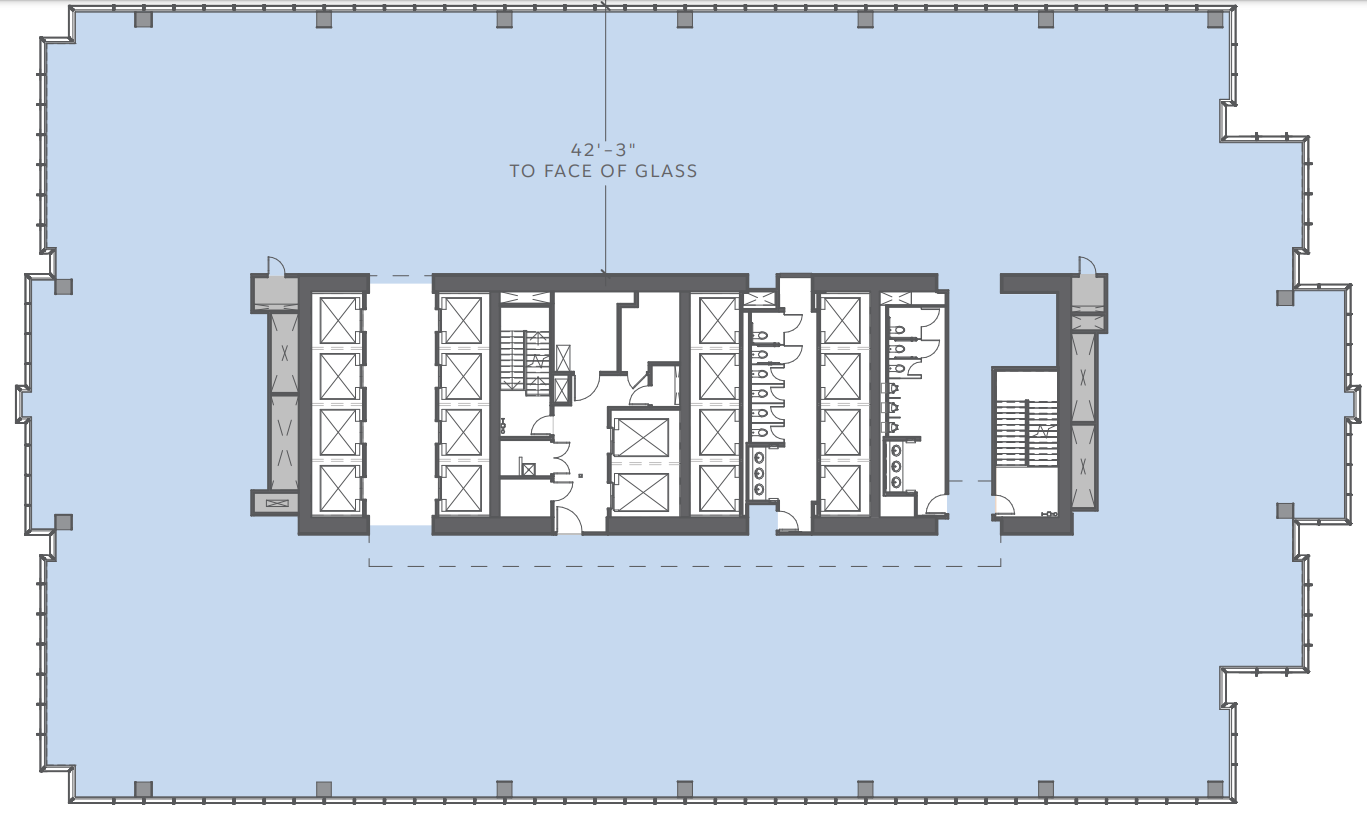
Unparalleled Aesthetics
The Spring of Things
The amount of care and consideration put forth by the teams involved to create an unparalleled aesthetic in the office space is evident in noise-reduction infrastructure decisions and cleverly integrated design choices that make this building an architectural marvel.
All significant hydronic piping in the building is suspended by a spring, limiting the amount of sound generated by the HVAC system to ensure a noise-free working environment for office tenants. Dan Karnes adds that, while this added an extra layer of complexity to an already intricate project, this design choice speaks to the joint efforts of the architect and engineers’ ability to meet challenging project demands.
“Every pipe that would normally be sitting on the ground or a hanger is suspended by some sort of spring,” Dan explained, “Just the intellectual prowess needed to make all of those calculations and make that possible really speaks to the efforts of not only our engineering team but the collaborative mindset of the project as a whole.”
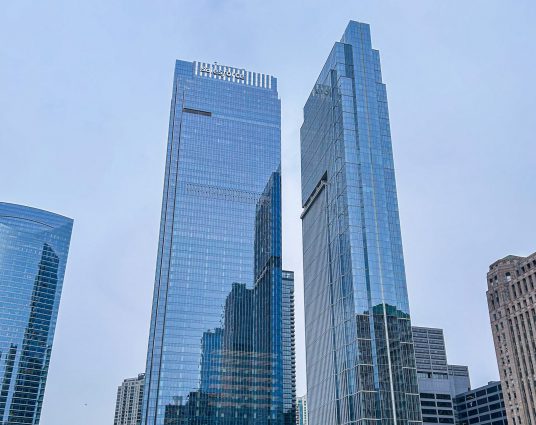

What’s Louver Got to Do With It?
There are instances in projects where the necessity for mechanical infrastructure overrides the architect’s vision of the building’s visual aesthetics. Louvers are a prime example of an idiosyncrasy that can stand at odds with a building’s façade. Louvers are exterior vents that are designed to allow outdoor airflow into a building while limiting water penetration into a structure.
The architectural team worked in conjunction with Alvine Engineering’s mechanical engineers and the structural engineer to create a one-of-a-kind offset curtain wall that effectively hides the louvers while also providing a breathtakingly seamless exterior glass wall.
“On other projects, most architects would just accept the louver as a necessary mechanical function that breaks the architectural aesthetic. It can be cost prohibitive to attempt reworking intakes and protection against the elements,” Dan Karnes reiterates, “On this project, however, the louvers completely disappear.”
A Masterclass in Collaboration
A Cascading Effect
An additional tenant joined after the core and shell design was complete and requested to add kitchens along with other amenities to the building’s higher levels. What may seem like a minor change to the building’s master plan would have a cascade of effects on the building’s overall calculations. In response, Alvine Engineering’s team went back to the drawing board to assess previous electrical and mechanical decisions to better understand managing the changes with construction already underway. Despite the challenge, our firm’s engineers were able to effectively accommodate the requests. The ability of the team to effectively field the significant adjustments is a testament to the building’s initial design and the project team collaboration.
“As engineers, when we receive a unique and challenging request, we go back and assess everything from the basics,” Kyle explained, “So, we dig into every decision we’ve made to see how we can accommodate and what we can make work.”
Despite the obstacles presented by the new design challenges, Dan Karnes highlights the client’s trust in Alvine Engineering’s ability to effectively administer the changes to the design. Where other developers may refuse the request, Hines chose partners with proven track records in innovative solutions and a mindset that drives solutions to fruition.
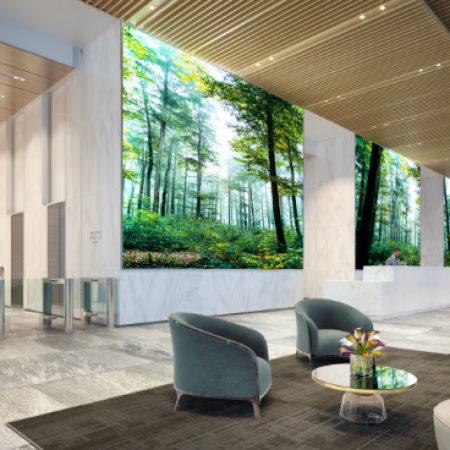
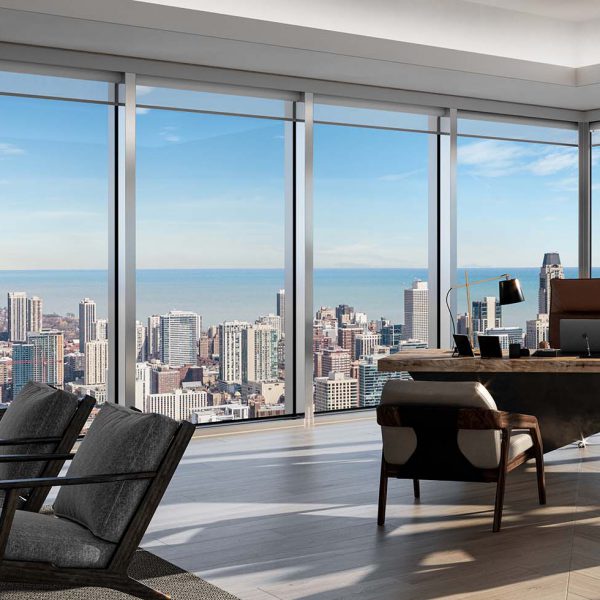
Questioning What’s Possible
Despite economic slowdowns, limitations in travel, product shortages, and challenging design obstacles, Salesforce Tower Chicago stands tall along the Chicago River. A testament to a design team that explored innovative options with open minds, our firm generated unique designs and executed them despite limitations that slowed construction to a nationwide standstill. The building is already teeming with activity and life, a sign of well-earned success for the Hines’ property management and development teams.
“This is an iconic piece of Chicago,” Kyle concludes. “There are a lot of projects that have their challenges and complexities, and this project was no different, but what made this a truly stand-out development was how the team came together to bring this iconic piece of architecture to the city during an unprecedented time in the industry.”
Behind every unique building integration and architectural marvel, there was a group of people who drove every decision, calculation, model, and design and worked fervently to bring it to life.
Learn more about Alvine Engineering’s Chicago project portfolio here.
About the Designers

Kyle Weber
Kyle is a Project Manager and an electrical engineer with 10 years of experience. Kyle earned a Master’s degree in Architectural Engineering from the University of Nebraska Durham School of Architectural Engineering in 2014 and has been involved in a number of technically sophisticated and high-profile electrical design projects.

Dan Karnes
Dan is a LEED-accredited professional and a mechanical engineer who has been designing some of the firm’s most complex mechanical systems since 2019. Dan earned a Master’s in Architectural Engineering from the University of Nebraska Durham School of Architectural Engineering in 2005 and specializes in systems layout, energy studies, HVAC system design and life cycle analysis.
All Renderings Courtesy of Pelli Clarke & Partners and Steelblue LLC.


